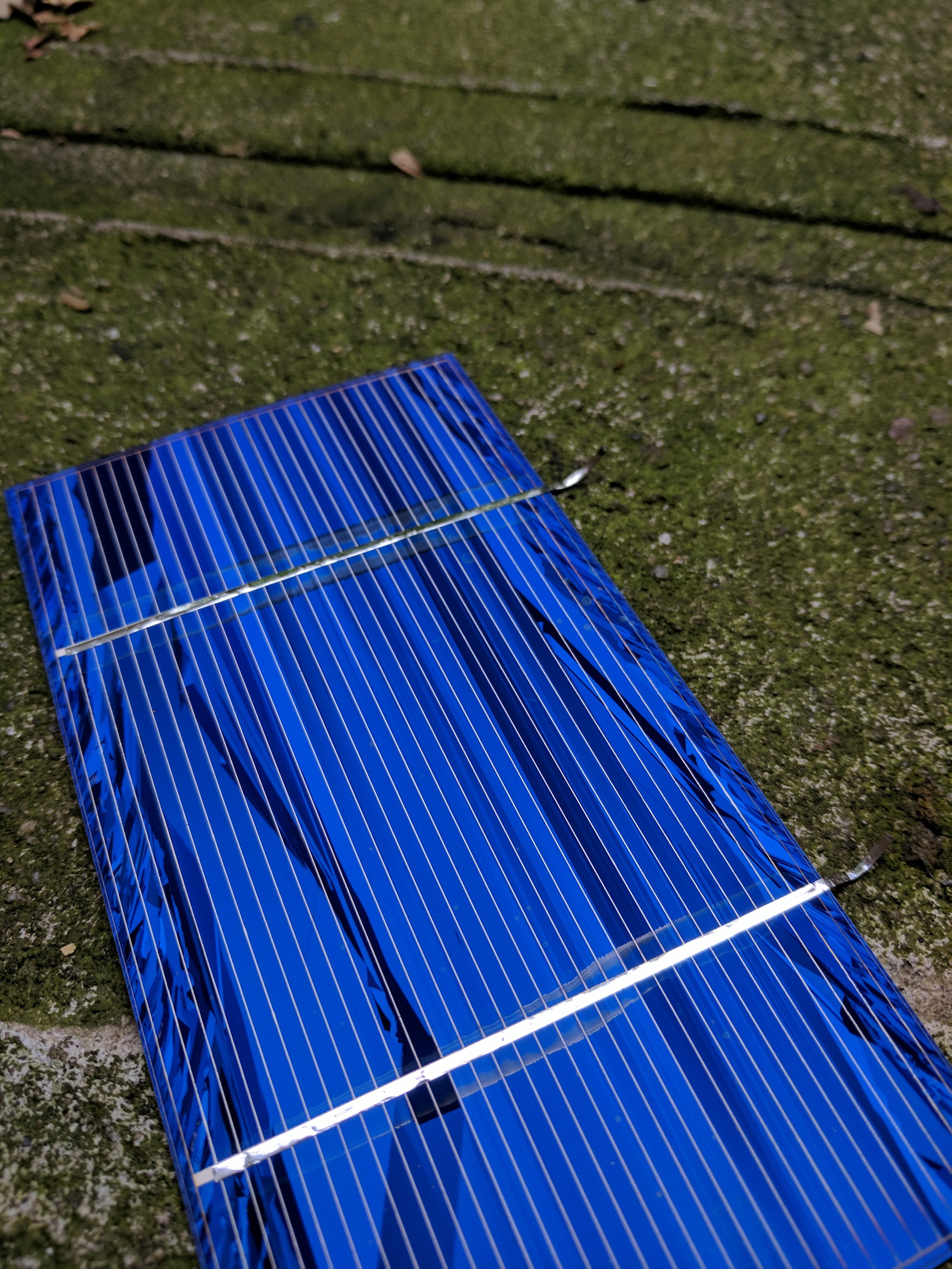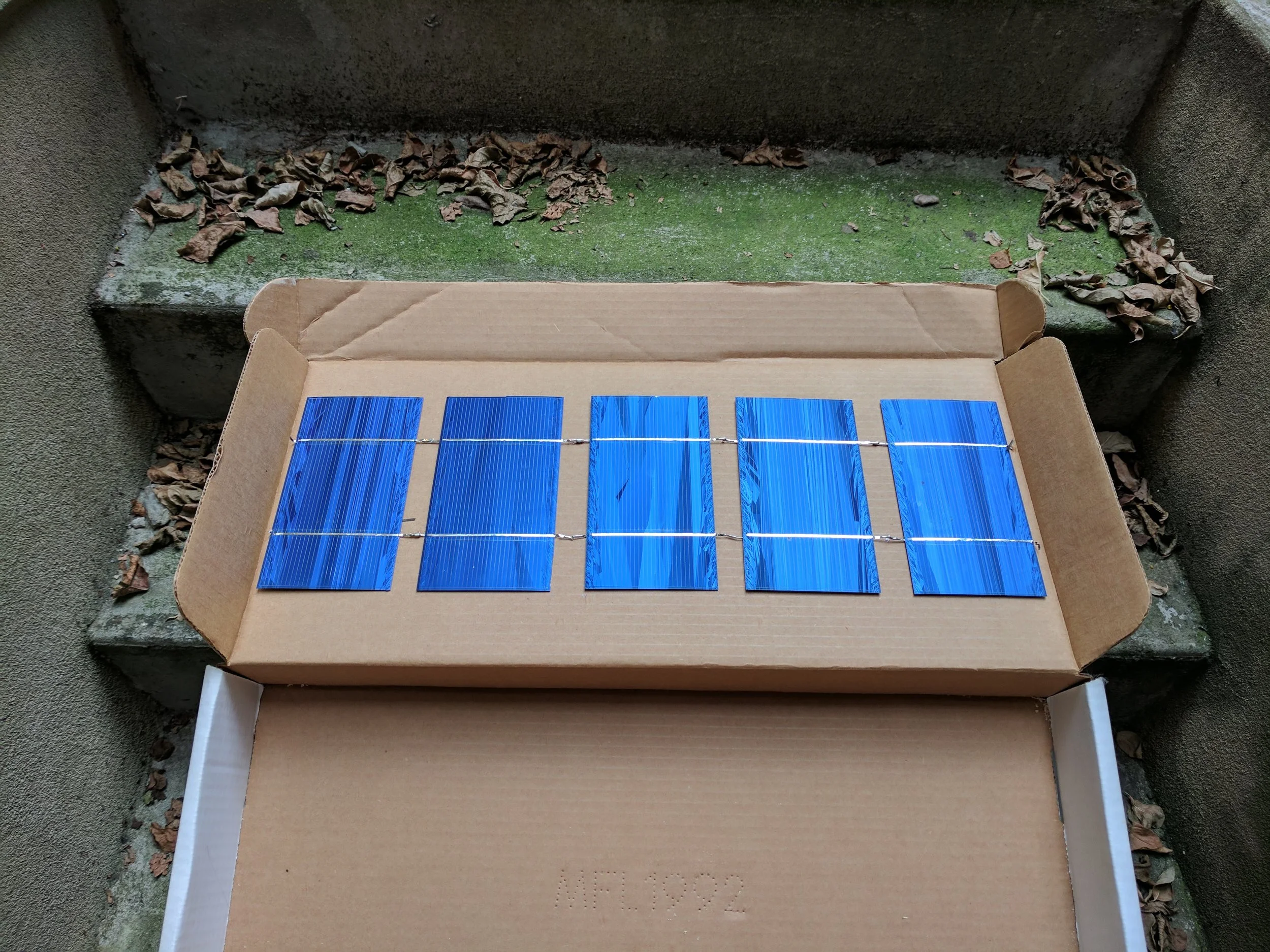A deeper dive into the Quad Comparator
We’ve been deep into classes mode and have been neglecting the hardware side of things but recently had a little free time to put together a video about using the Quad Comparator to process audio. This deeper dive into the Quad Comparator has been long overdue so we are happy to put it out into the world (complete with a goofy click-bait style thumbnail).
We don’t have a ton of these in stock, and have been building a lot less modules in general lately, so if you’re interested we suggest snatching one up while you can.
Please feel free to leave a comment or contact us with any questions.
Solar Cell Control Voltage
A few years ago I bought a bunch of solar cells that had been harvested from broken solar panels. I have used them to add light control to synth projects with basically zero environmental impact (using trash to generate a voltage from sunlight). Each cell provides up to 0.5V, and I have used up to 5 cells to generate approximately 0 to 2.5V. Recently I combined two cells in a junk 8.25"x10" picture frame to provide ~0-1V of control voltage in a compact and relatively sturdy package (the solar cells are VERY fragile, so if you can solder them together without breaking them it is a good idea to package them safely).
Two solar panels framed with output to a 3.5mm jack.
Generating 0.32V on a cloudy late afternoon in July.
Connecting the solar cells is fairly straight-foward, though their fragility can make things a little tricky. Each cell gives a maximum of 0.5V, and to generate higher voltages we connect the solar cells in series. If we consider the blue side to be a negative potential and the grey side to be positive, then to connect them in series we connect the negative (blue) of one cell to the positive (grey) of the next. Now when we place the positive lead of a voltmeter to the positive lead of the first cell, and the COM lead to the negative of the second cell, we will see a range of 0V to 1V (of course depending on lighting).
Front of solar cell. The metallic strip running across is soldered to the back of another solar cell to connect them in series and generate higher voltages.
Back of solar sell. Metallic strips are soldered to pads which ultimately connect to the strips on the front of another solar cell to generate higher voltages.
Continuing to add cells in series we create even higher voltages. The max I have done is 5 cells for a performance where I placed the cells inside of a box and controlled the pitch of a homemade synth by opening and closing this box.
Solar box. Control voltage changed by opening and closing the box.
What is behind all of this solar cell voltage generation? Well, it can get complicated pretty quickly, but here's the basic idea:
Semiconductors (the stuff that makes up transistors, diodes, integrated circuit chips, LEDs, and solar cells) are composed of special chemicals that are really good at moving electrons around. A very common semiconductor is Silicon, which is "doped" (chemically bonded) to other chemicals, giving it a tendancy to either accept or reject electrons. In a dormant state, the semiconductor creates a barrier between Silicon that is doped to have extra electrons and Silicon that is doped to "want" electrons. In a solar cell, photons from the sun create a bridge across that barrier, allowing electrons to flow from excess area to wanting area, generating a voltage. Somewhat related, the opposite occurs when a voltage is applied across an LED, generating photons.
Link to write up of a performance with solar synth: http://bedfordandbowery.com/2015/07/apocalypse-chow-zodiac-dinners-and-solar-power-synths-in-a-bed-stuy-garden/
Experiments in modular beat making (Part 1)
While I enjoy using modular electronics to create ambient environments and harsh noise experiments, I really just want to make fun beats. This can be difficult depending on what equipment you have, especially if you want to add variety or develop song structure. A couple years ago while working at Verbos Electronics, I was talking drum machines with Mark and he recommended sampling the trigger output of my TR-626 onto my Akai MPC in order to expand my modular beat making abilities.
TR-626 TRIG OUT
Since doing this I have been using my MPC 1000 to trigger events throughout my modular system, and with standard 6 outputs on the 1000 it really adds a lot of variety. Currently I am using one output to advance my Verbos Voltage Multistage and another to trigger its strobe (reset), the other outputs are used to trigger envelopes and percussion modules. Below is a track I made with this setup.






